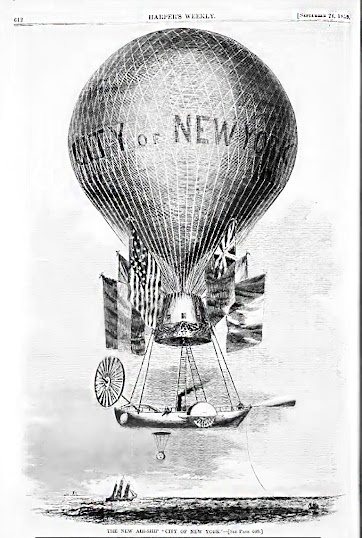1856-- Mrs. Eunice Foote and Climate Change
Circumstances Affecting the Heat of the Sun’s Rays:
By Eunice Foote
From the American Journal of Science and Arts Nov 1856
Pages 382, 383
From a paper read before the American Association August 23rd 1856
My
investigations have had for their object to determine the different
circumstances that affect the thermal action of the rays of light that proceed
from the sun.
Several
results have been obtained.
First. The
action increases with the density of the air, and is diminished when more
rarified.
The
experiments were made with an air-pump and two cylindrical receivers of the
same size, about four inches in diameter and thirty in length. In each were
placed two thermometers, and the air was exhausted from one and condensed in
the other. After both had acquired the same temperature they were placed in the
sun, side by side, and while the action of the sun’s rays rose to 110 degrees in
the condensed tube, it attained only 88 degrees in the other. I had no means at
hand of measuring the degree of condensation or rarefication.
The
observations taken once in two or three minutes, were as follows:
This
circumstance must affect the power of the sun’s rays in different places, and
contribute to produce their feeble action on the summits of lofty mountains.
Secondly.
The action of the sun’s rays was found to be greater in moist than dry air.
In one of
the receivers the air was saturated with moisture—in the other it was dried by
use of chorid (sic) of calcium.
Both were
placed in the sun as before and the result was as follows:
The high
temperature of moist air has frequently been observed. Who has not experienced
the burning heat of the sun that precedes a summer’s shower? The isothermal
lines will, I think, be found to be much affected by the different degrees of
moisture in different places.
Thirdly.
The highest effect of the sun’s rays I have found to be in carbonic acid gas.
One of the receivers was filled with it, the other with common air, and the result was as follows:
The receiver containing the gas
became itself much heated—very sensibly more so than the other—and on being
removed it was many times as long in cooling.
An
atmosphere of that gas would give to our earth a high temperature; and if as
some suppose, at one period of its history the air had mixed with it a larger
proportion than at present, an increased temperature from its own action as
well as from the increased weight must have necessarily resulted.
On
comparing the sun’s heat in different gases, I found it to be in hydrogen gas
104 degrees; in common air, 106 degrees; in oxygen gas 108 degrees; and in
carbonic acid gas, 125 degrees.
You can't say we were not warned early about climate change!
Not surprisingly, an Englishman named John Tyndall "discovered" the same thing Foote did three years later. He was unaware of Foote's paper. For decades he was given credit for what has become the basis of climate science.






Comments
Post a Comment